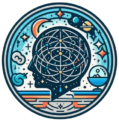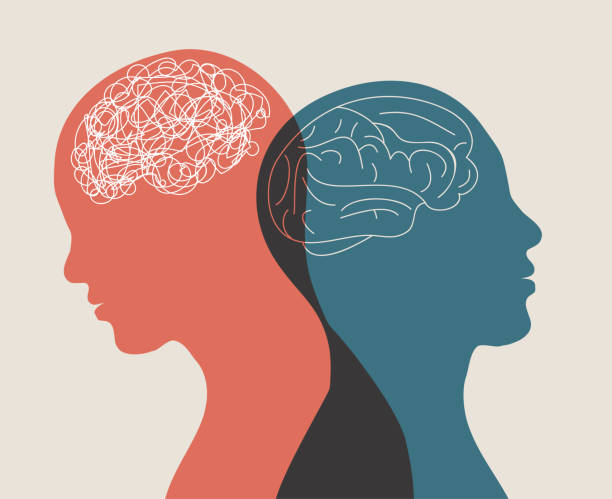Introduction
In recent years, a subtle yet potent movement has emerged in the realm of mental health and cognitive enhancement: microdosing psychedelics. This practice, involving the consumption of minuscule amounts of substances like psilocybin (the active compound in “magic mushrooms”) and LSD, has captivated the imagination of both laypeople and scientific communities. While full-dose psychedelic experiences have long been associated with profound perceptual shifts and spiritual insights, microdosing offers a more subdued, functional approach, promising benefits like enhanced mood, creativity, and cognitive focus without the dramatic alterations in consciousness.
Anecdotal reports and early scientific studies suggest that these “tiny doses” may provide outsized benefits. However, questions about efficacy, safety, legality, and long-term consequences remain. This article explores the burgeoning field of microdosing, examining its scientific underpinnings, potential benefits, risks, and future directions, offering a holistic view of this emerging trend in mental health and cognitive science.
Understanding Microdosing
At its core, microdosing involves taking approximately 1/10th to 1/20th of a typical recreational dose of a psychedelic substance. For instance:
- A standard recreational dose of LSD is around 100 micrograms (µg); a microdose might be 5–15 µg.
- A full dose of psilocybin mushrooms could range from 2 to 3.5 grams, with a microdose typically between 0.1 to 0.3 grams of dried mushrooms.
Unlike full doses, microdoses are intended to be sub-perceptual—meaning that the user should not experience overt hallucinations or intense perceptual shifts. Instead, subtle enhancements in mood, cognition, and focus are reported.
Read More- Main Character Syndrome
Origins of Microdosing
Though indigenous cultures have used low doses of psychedelics for ritualistic purposes for centuries, the modern concept of microdosing was popularized by Dr. James Fadiman in his 2011 book The Psychedelic Explorer’s Guide. Fadiman’s surveys and anecdotal data collection laid the groundwork for understanding microdosing’s potential, encouraging a systematic approach to experimenting with tiny doses of psychedelics.
Scientific Evidence
Despite enthusiastic anecdotal support, rigorous scientific research on microdosing is still in its infancy. Nonetheless, a systematic review by Kuypers et al. (2019) analyzed 44 studies on the subject, finding preliminary evidence of benefits in mood enhancement, cognition, and creativity. However, the authors emphasized the heterogeneity of study designs, small sample sizes, and the need for double-blind, placebo-controlled trials.
1. Mood Enhancement
A systematic study by Polito and Stevenson (2019) found that microdosers reported improvements in mood, including reduced symptoms of depression and anxiety. Some users described enhanced emotional resilience and greater optimism, aligning with emerging theories that psychedelics modulate the default mode network (DMN) in the brain, which is often overactive in mood disorders.
2. Cognitive Function and Creativity
In a study by Anderson et al. (2019), microdosers reported increased divergent thinking, problem-solving abilities, and creativity. These findings suggest that microdosing may enhance cognitive flexibility, potentially by promoting neuroplasticity or enhancing communication between brain regions.
3. Placebo Effect and Challenges in Research
One major challenge in studying microdosing is the placebo effect. Because the doses are so small, participants often cannot distinguish between placebo and active dose. Recent studies employing double-blind, placebo-controlled designs, such as those led by researchers like Balázs Szigeti, have demonstrated that many reported benefits might be attributable to expectancy effects rather than the pharmacological action of the psychedelics.
Mechanisms of Action
While much remains speculative, several hypotheses have emerged:
- Serotonergic Modulation: Psychedelics like LSD and psilocybin primarily act on serotonin 2A receptors (5-HT2A), which are implicated in mood regulation and cognition.
- Neuroplasticity: Animal studies and some human data suggest that psychedelics can promote synaptogenesis and dendritic growth, potentially “rewiring” maladaptive neural circuits.
- Default Mode Network (DMN) Modulation: Psychedelics disrupt the DMN, associated with rumination and self-referential thinking, which may underlie conditions like depression and anxiety.
Potential Benefits of Microdosing
Although there are risks to microdosing, some of its benefits include-
1. Mental Health Applications
-
- Depression and Anxiety: Microdosing may offer a novel adjunct to existing treatments, particularly for treatment-resistant depression. Early evidence suggests improvements in mood stability and resilience.
- Post-Traumatic Stress Disorder (PTSD): Anecdotal reports suggest benefits for trauma survivors, though robust clinical trials are needed.

2. Cognitive Enhancement
-
- Focus and Productivity: Many microdosers claim improved attention span and task engagement, making it popular among professionals and creatives.
- Creativity: Enhanced divergent thinking and lateral problem-solving are frequently reported.

3. Physical Benefits
Some users report improved sleep quality, energy levels, and reduced migraines, though these effects are less studied.
Risks and Considerations
Despite the enthusiasm, microdosing is not without risks:
- Physiological Effects: Some users report headaches, nausea, or insomnia.
- Psychological Risks: Even in tiny doses, psychedelics can exacerbate anxiety or trigger latent psychiatric conditions, especially in predisposed individuals.
- Legal Status: Psychedelics remain Schedule I substances in many jurisdictions, including the U.S., making possession and use illegal in most contexts.
- Lack of Long-term Data: Unlike pharmaceuticals that undergo rigorous clinical trials, microdosing lacks robust, long-term safety data. The cumulative effects of repeated microdosing are unknown.
Cultural and Ethical Dimensions
Microdosing exists at the intersection of biomedicine, counterculture, and personal experimentation:
- Mainstream Adoption: Silicon Valley entrepreneurs and artists have openly endorsed microdosing for productivity and creativity, contributing to its cultural cachet.
- Indigenous Knowledge: It’s essential to acknowledge that the resurgence of interest in psychedelics often overlooks indigenous traditions and wisdom, raising questions about cultural appropriation.
- Equity and Access: If psychedelic-assisted therapies (including microdosing) become mainstream, equitable access—beyond affluent early adopters—must be prioritized.
Legal Landscape
Globally, psilocybin and LSD remain controlled substances under the UN’s Convention on Psychotropic Substances (1971), though legal landscapes are shifting:
- Decriminalization Efforts: Cities like Denver, Oakland, and Santa Cruz have decriminalized psilocybin possession.
- Therapeutic Research: The FDA has granted “breakthrough therapy” designation to psilocybin for major depressive disorder, signaling a potential paradigm shift.
- Risks of Self-Experimentation: Until microdosing protocols are standardized and regulated, self-experimentation carries legal and safety risks.
The Future of Microdosing Research
While anecdotal reports are compelling, rigorous, placebo-controlled clinical trials are necessary to validate microdosing’s safety and efficacy. Promising directions include:
- Randomized Controlled Trials (RCTs): Large-scale, double-blind studies are underway to test microdosing in mood disorders and cognitive enhancement.
- Biomarker Studies: Advanced neuroimaging and molecular studies may uncover biological correlates of microdosing’s effects.
- Personalized Dosing: Future research may identify individualized microdosing protocols, optimizing outcomes while minimizing risks.
- Integration with Therapy: Combining microdosing with psychotherapeutic frameworks may yield synergistic benefits, particularly for trauma and mood disorders.
Conclusion
Microdosing psychedelics represents a fascinating frontier in mental health and cognitive enhancement. While preliminary evidence and user testimonials suggest potential benefits in mood, creativity, and focus, rigorous scientific validation is essential. Legal, ethical, and cultural considerations further complicate the landscape, underscoring the need for thoughtful, inclusive, and evidence-based approaches.
As research advances and legal frameworks evolve, microdosing may transition from underground experimentation to mainstream therapeutic practice—potentially reshaping how we understand and cultivate mental well-being in the 21st century.
References
Anderson, T., Petranker, R., Christopher, A., Rosenbaum, D., Weissman, C., Dinh-Williams, L.-A., Hui, K., & Hapke, E. (2019). Microdosing psychedelics: Personality, mental health, and creativity differences in microdosers. Psychopharmacology, 236(2), 731–740.
Kuypers, K. P. C., Ng, L., Erritzoe, D., Knudsen, G. M., Nichols, D. E., Nichols, C. D., Pani, L., Soula, A., & Nutt, D. (2019). Microdosing psychedelics: More questions than answers? An overview and suggestions for future research. Journal of Psychopharmacology, 33(9), 1039–1057.
Polito, V., & Stevenson, R. J. (2019). A systematic study of microdosing psychedelics. PLOS ONE, 14(2), e0211023.
Subscribe to PsychUniverse
Get the latest updates and insights.
Join 2,957 other subscribers!
Niwlikar, B. A. (2025, June 2). Microdosing Psychedelics and 3 Important Scientific Evidence for It. PsychUniverse. https://psychuniverse.com/microdosing-psychedelics/



